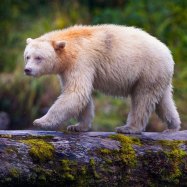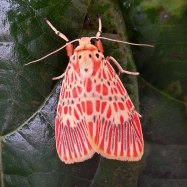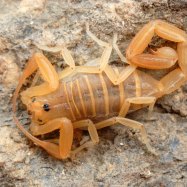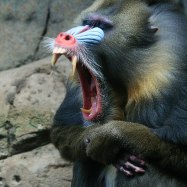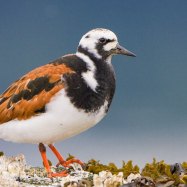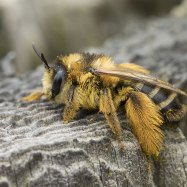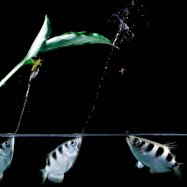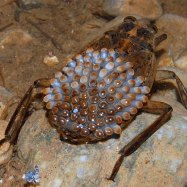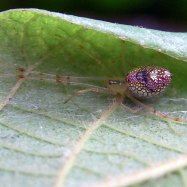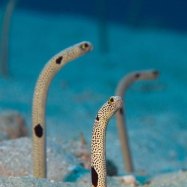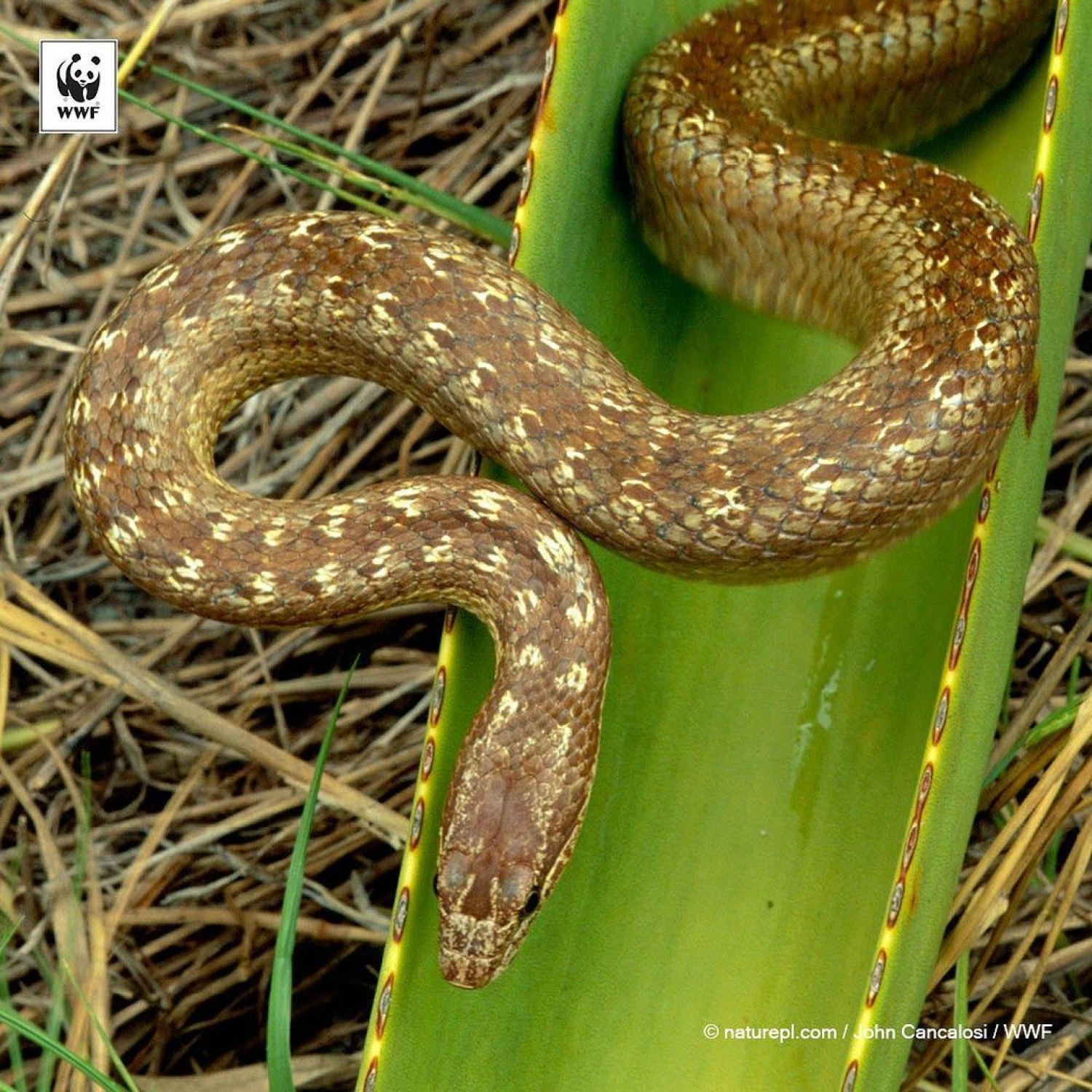
Antiguan Racer Snake
Up to 175 cm
The Antiguan Racer Snake, found only on the Island of Antigua, is a stunning reptile known for its slender and elongated body shape. At up to 175 cm in length, it is one of the largest snakes in the region. Despite its intimidating appearance, it is non-venomous and plays a crucial role in maintaining the island's ecosystem. However, due to human activities and invasive species, this once abundant species is now critically endangered. Conservation efforts are underway to protect and preserve this unique animal for future generations to admire.
Animal Details Summary:
Common Name: Antiguan Racer Snake
Kingdom: Animalia
Habitat: Grasslands, dry forests, and scrublands
The Remarkable Story of the Endangered Antiguan Racer Snake
In the beautiful island of Antigua, nestled in the Caribbean Sea, there is a unique creature that has captured the hearts of many. The Antiguan Racer Snake, scientifically known as Alsophis antiguensis, is a critically endangered species that holds a special place in the island's ecosystem. With its striking appearance and intriguing characteristics, this snake has become a symbol of resilience and triumph against all odds.Belonging to the kingdom Animalia, phylum Chordata, and class Reptilia, the Antiguan Racer Snake is part of the order Squamata, which includes lizards, snakes, and amphisbaenians Antiguan Racer Snake. They are a member of the Dipsadidae family, which consists of colubrid snakes found in Central and South America. However, the Antiguan Racer Snake is endemic to the island of Antigua, making it a rare and treasured species.
This elusive snake can be found in different types of habitats, including grasslands, dry forests, and scrublands. They are highly adaptable and can even live in human-made environments such as farms and gardens. However, despite their versatile habitat range, the Antiguan Racer Snake has been facing a severe threat to their survival.
The Carnivorous Diet of the Antiguan Racer Snake
The Antiguan Racer Snake is a carnivore, meaning it preys on other small animals for its food. They primarily feed on small vertebrates like lizards, rodents, birds, and frogs. They use their slender and elongated body to their advantage, slithering silently to catch their prey. Their diet plays a crucial role in controlling the population of pests, making them an essential part of the island's ecosystem American Bulldog.However, their feeding habits have also contributed to their decline in numbers. Due to the presence of invasive species like the Indian mongoose, which was introduced to the island in the 19th century, the population of their prey has drastically decreased. As a result, the Antiguan Racer Snake has been facing a shortage of food, leading to a decline in their population.
A Limited Geographical Distribution
The Antiguan Racer Snake is a species unique to the island of Antigua and is not found anywhere else in the world. Its home range is limited to just 5% of the island, primarily in the northeastern and central parts. This limited geographical distribution is one of the main reasons why the Antiguan Racer Snake is facing extinction. Any disturbance in their habitat, such as deforestation, can have a significant impact on their survival.The Long Journey Towards Conservation
Despite its small home range, the Antiguan Racer Snake has a long history that dates back to the 1800s when it was first discovered. This snake played a significant role in the lives of the Antiguan people, as its skin was used to make clothing, and its meat was consumed as food. As a result, the snake's population significantly declined, and it was considered extinct in the 1970s.In 1989, after thorough research and surveys, it was discovered that there were still a few Antiguan Racer Snakes left on the island. This led to efforts in conservation, with the establishment of the Antigua and Barbuda Racer Conservation Project (ABRCP) in collaboration with the Durrell Wildlife Conservation Trust. The main aim of this project was to protect and increase the population of this critically endangered species.
The Impact of Human Activity on the Antiguan Racer Snake
Unfortunately, human activities have had a significant adverse impact on the Antiguan Racer Snake. Deforestation, development of infrastructure, and the introduction of invasive species have all contributed to their decline. The fast-paced development and growth of the island have led to the destruction of their natural habitat, leaving them with limited resources to survive.Additionally, the introduction of invasive species has posed a severe threat to the Antiguan Racer Snake. The Indian mongoose, which was introduced for pest control, has become a predator of the Antiguan Racer Snake, leading to a decline in their population. It has been estimated that there are less than 1,000 Antiguan Racer Snakes left in the wild, making them one of the rarest snakes in the world.
Efforts in Conservation and Breeding
Thanks to the efforts of the ABRCP, the population of the Antiguan Racer Snake has been slowly increasing. The organization has been actively working towards protecting their natural habitat, reducing threats from invasive species, and increasing their population through breeding programs. The project has also been successful in educating the local community about the importance of this snake and how they can contribute to its conservation.One of the most significant achievements of the ABRCP is the establishment of a successful captive breeding program. This program has led to a considerable increase in the number of snakes bred in captivity, providing hope for the survival of the species. These captive-bred snakes are then released into their natural habitat after being deemed healthy and fit for survival.
Challenges and Ongoing Efforts
Conservation efforts for the Antiguan Racer Snake have not been without challenges. One of the main issues is the lack of genetic diversity within the small population. This poses a risk of inbreeding and can potentially lead to health problems and decreased survival rates. To combat this, the ABRCP has been working on introducing snakes from other nearby islands to increase genetic diversity.The ABRCP has also been working closely with the government and the local community to ensure that the Antiguan Racer Snake's natural habitat is protected. They have been conducting surveys and monitoring the snake's population to keep track of their numbers. The organization has also initiated programs to protect their prey species and control invasive species.
From Endangered to Thriving
Through all the efforts in conservation and breeding, there has been a glimmer of hope for the Antiguan Racer Snake. In 2016, the International Union for Conservation of Nature (IUCN) downgraded their status from critically endangered to endangered. The Antiguan Racer Snake has become a symbol of hope and resilience, with a promising future ahead.The story of the Antiguan Racer Snake is nothing short of remarkable. From being on the brink of extinction to slowly thriving, this snake has proved its resilience and ability to adapt. However, it still faces many challenges, and it is crucial to continue efforts in conservation to ensure its survival for generations to come. The Antiguan Racer Snake is a beautiful and unique species that deserves to be protected and celebrated.

Antiguan Racer Snake
Animal Details Antiguan Racer Snake - Scientific Name: Alsophis antiguensis
- Category: Animals A
- Scientific Name: Alsophis antiguensis
- Common Name: Antiguan Racer Snake
- Kingdom: Animalia
- Phylum: Chordata
- Class: Reptilia
- Order: Squamata
- Family: Dipsadidae
- Habitat: Grasslands, dry forests, and scrublands
- Feeding Method: Carnivorous
- Geographical Distribution: Antigua
- Country of Origin: Antigua
- Location: Island of Antigua
- Animal Coloration: Brown with dark crossbands
- Body Shape: Slender and elongated
- Length: Up to 175 cm
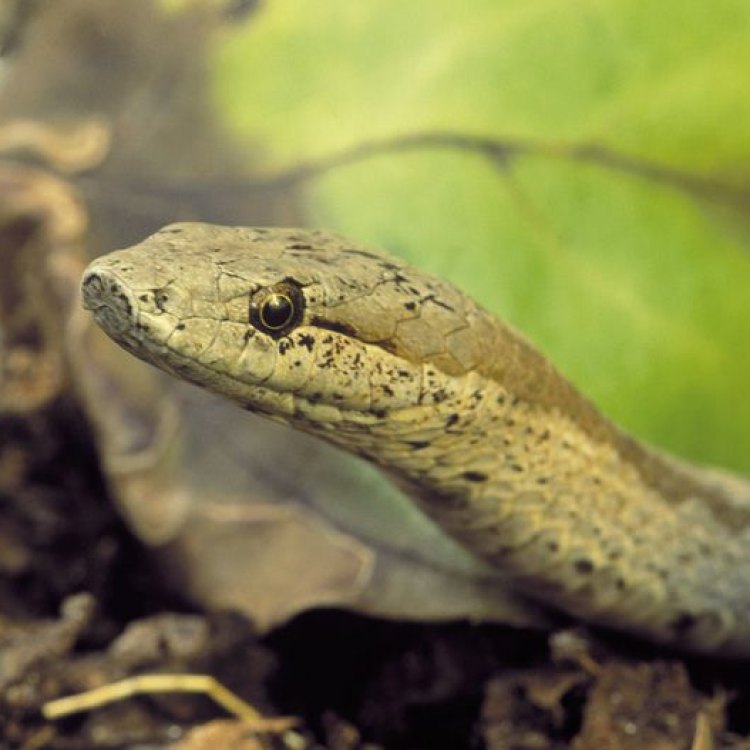
Antiguan Racer Snake
- Adult Size: Large
- Average Lifespan: Up to 15 years
- Reproduction: Oviparous
- Reproductive Behavior: Males engage in combat for females
- Sound or Call: Not known for vocalizations
- Migration Pattern: Non-migratory
- Social Groups: Solitary
- Behavior: Diurnal
- Threats: Habitat loss and introduced predators
- Conservation Status: Critically Endangered
- Impact on Ecosystem: Maintains balance by controlling rodent populations
- Human Use: Not used by humans
- Distinctive Features: Large size and distinctive coloration
- Interesting Facts: Antigua and Barbuda's only endemic snake species
- Predator: Introduced mongoose and cats
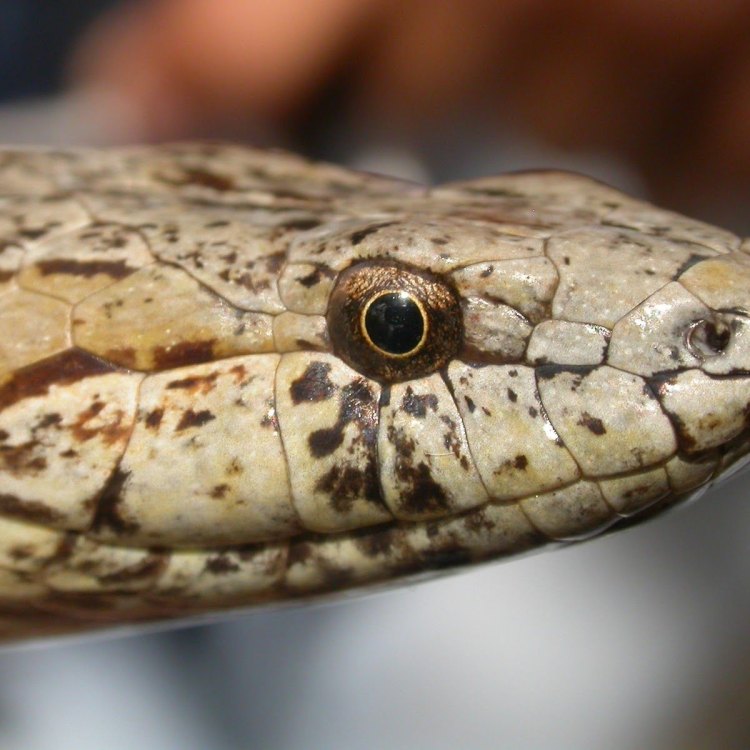
Alsophis antiguensis
The Mysterious and Endangered Antiguan Racer Snake – A Unique Species Worth Protecting
The Antiguan Racer Snake is a mysterious and unique species that calls the Caribbean island of Antigua home. This awe-inspiring and intriguing snake has captured the attention and curiosity of many, from scientists to locals. With its distinctive features and critical role in the ecosystem, the Antiguan Racer Snake is a species worth protecting and preserving.Adult Size
One of the most distinctive features of the Antiguan Racer Snake is its large size PeaceOfAnimals.Com. These snakes can reach an adult length of up to six feet, making them one of the largest endemic snake species in the Caribbean. Their size may be intimidating to some, but it is an essential adaptation that allows them to thrive in their environment.
Average Lifespan
The Antiguan Racer Snake has a relatively long lifespan, with an average of 15 years in the wild. This lifespan may seem short compared to other species, but for a snake, it is considered quite long. These snakes go through several stages of growth, from hatchlings to adulthood, before reaching their peak size and reproductive age.
Reproduction
The Antiguan Racer Snake is oviparous, meaning they lay eggs to reproduce. This method of reproduction allows for the survival of the species, as they can lay multiple eggs at a time. The females will lay their eggs in hidden areas, such as under rocks or in tree cavities, to protect them from potential predators.
Reproductive Behavior
During the breeding season, male Antiguan Racer Snakes engage in combat to compete for female partners Atlantic Sturgeon. This behavior is known as "combat dance," where the males will intertwine and push against each other to assert dominance and win the right to mate. This reproductive behavior is essential for maintaining genetic diversity within the species and ensuring the survival of future generations.
Sound or Call
Although the Antiguan Racer Snake is diurnal (active during the day), they are not known for vocalizations. These snakes communicate using body language, such as posturing and movement, rather than vocal calls or sounds.
Migration Pattern
Unlike some snake species that migrate to different areas depending on the season, the Antiguan Racer Snake is non-migratory. They are typically found in the same areas throughout their entire lives, making them a crucial part of the ecosystem of their home island.
Social Groups
The Antiguan Racer Snake is a solitary species, meaning they do not live in groups or packs like some other animals. These snakes usually prefer to be on their own, with the exception of the breeding season, where they will interact with other snakes of the opposite sex.
Behavior
As diurnal creatures, the Antiguan Racer Snake is most active during the day, hunting for prey and basking in the warm sun. They are excellent climbers and can often be found in trees or shrubs, hunting for small birds and reptiles. These snakes are also known for their speed and agility when hunting, making them efficient predators.
Threats
The Antiguan Racer Snake, like many other species, faces significant threats to its existence. One of the most significant threats is habitat loss due to human development. As the island of Antigua continues to urbanize and expand, these snakes are losing their natural habitats, forcing them into smaller lands and diminishing their resources.
Additionally, introduced predators, such as mongoose and cats, pose a significant threat to these endemic snakes. These predators are not native to the island and were brought in by humans, disrupting the natural balance of the ecosystem and preying on the Antiguan Racer Snake.
Conservation Status
Unfortunately, due to these threats, the Antiguan Racer Snake is classified as critically endangered by the International Union for Conservation of Nature (IUCN). There are currently estimated to be only 500-900 individuals left in the wild, making them one of the rarest snake species in the world.
Impact on Ecosystem
The Antiguan Racer Snake may not seem like a keystone species at first glance, but they play a crucial role in the ecosystem of Antigua. As predators, they help maintain a balance in their habitat by controlling populations of rodents, birds, and other small animals. Without these snakes, the island's rodent population would likely explode, causing a ripple effect throughout the ecosystem.
Human Use
Despite its large size and impressive features, the Antiguan Racer Snake is not used for any human purpose. These snakes are not hunted or kept as pets, and there is no significant commercial value for them. They are purely wild creatures, deserving of our respect and protection.
Distinctive Features
The Antiguan Racer Snake is easily recognized by its large size and distinctive coloration. Their bodies are a beautiful shade of dark green, with a white or pale yellow stripe that runs down the length of their back. This color pattern helps them blend in with their surroundings, making them difficult to spot.
Interesting Facts
Aside from being an endemic species to the island of Antigua, the Antiguan Racer Snake has many unique and interesting facts. For example, they are the only snake found on the islands of Antigua and Barbuda, making them even more special and valuable.
Predator
Despite being an apex predator themselves, the Antiguan Racer Snake also has its own set of predators to worry about. The biggest threat to their survival comes from introduced species, such as mongoose and cats. These predators are not natural to the island and have had a detrimental impact on the snake population.
The Importance of Protecting the Antiguan Racer Snake
The Antiguan Racer Snake is a critical part of the ecosystem on the island of Antigua. Their role in controlling rodent populations helps maintain balance and promotes the health and diversity of the entire ecosystem. Additionally, these snakes hold cultural and intrinsic value, being a unique and endemic species to the island.
As human development continues to threaten their habitat and introduced predators pose a significant danger, it is vital to protect and preserve these snakes for future generations. Conservation efforts, such as habitat restoration and managing introduced species, are crucial for the survival of the Antiguan Racer Snake.
Conclusion
The Antiguan Racer Snake is a truly remarkable and unique species that deserves recognition and protection. Their distinctive features, critical role in the ecosystem, and endangered status make them a species worth learning about and conserving. As humans, it is our responsibility to protect these creatures and ensure their survival for years to come.
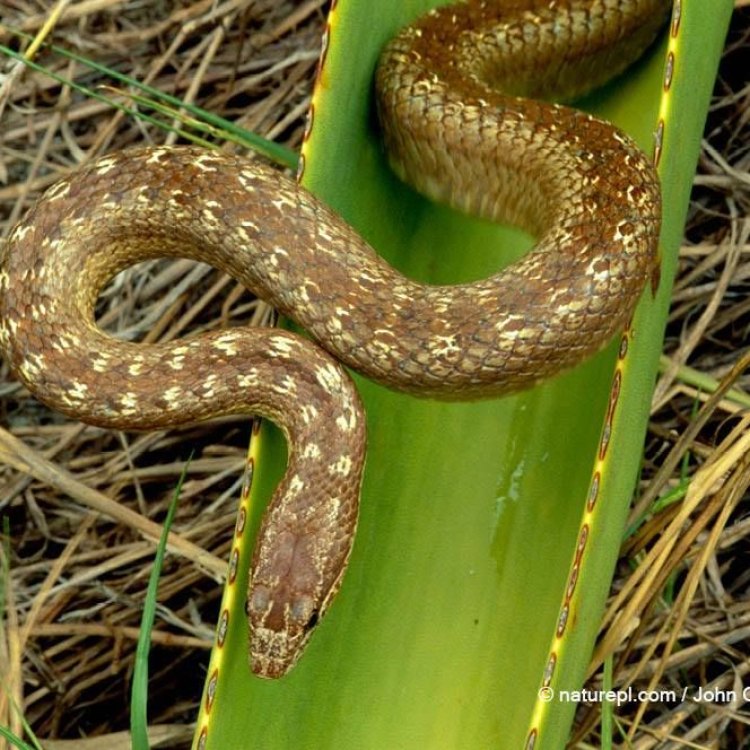
The Remarkable Story of the Endangered Antiguan Racer Snake
Disclaimer: The content provided is for informational purposes only. We cannot guarantee the accuracy of the information on this page 100%. All information provided here may change without prior notice.

